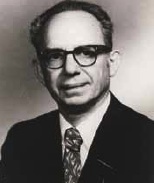 | |||
| ABOUT CONTACT OVERVIEW CONTRIBUTION A | B | C | D | E | F | G | H | I | J | K | L | M | N | O | P | Q | R | S | T | U | V | W | X | Y | Z | Dates | |||
|
WARNING:
This site deals only with the corporate corruption of science, and makes no inference about the motives or activities of individuals involved.
|
[Temporary: while site is under construction]Victor Horsley KramerPRELIMINARY MATERIAL ONLY 
1913: Born in Cincinnati
1935: Undergraduate degree in government Harvard University
1938: Law degree from Yale 1938–19: 57 with the US Justices Department, initially as a trial lawyer, then later as chief of the litigation section of the anti-trust division. The Washington Post labled him as one of "Uncle Sam's trustbuster" 1945–48: Pharmacists mate in US Navy during the war
1957: Joined Arnold, Fortas & Porter (later Arnold & Porter)
1970: "he shocked the local legal community when he decided to leave the firm for public interest law."
1971: The Institute for Public Interest Representation of Georgetown University Law Center [Since renamed the Institute for Public Representation] was established by the university with a Ford Foundation Grant. It was both a public interest law firm and a law-school clinical education program, dedicated to providing legal services to groups and individuals who were unable to secure effective legal counsel on matters significantly affecting issues of broad public importance.
1973: The "Winchester matter" which dealt with ways in which the cigaretee companies attempted to by-pass advertising regulations by promoting brand-named 'little cigar" ads, Victor Kramer, a Georgetown University law professor and ASH legal counsel on the petition." predicted "a two-year wait for congressional action.
1974 Jan 31: Senator Moss on the US Senate Congressional Record says that work on a petition for the "Less Hazardous Cigarette" had been done by a group at Georgetown University Law Center. He puts on the record: This work was performed by the Institute for Public Interest Representation at Georgetown University Law Center. The attorneys and students, led by Victor Kramer, director of the lnstitute have prepared an outstanding brief.   1975 March: TOBACCO COMPANIES AND THE GOVERNMENT joined in arguing before US District Court Judge Gasch that the Consumer Product Safety Commission has no authority to regulate cigarettes. The case was brought by Sen. Moss (D-Utah) and the American Public Health Assn., argued for them by Victor Kramer of the Institute for Public Interest Representation.
1975 Mar 11: The Tobacco Institute Newsletter records: TOBACCO COMPANIES AND THE GOVERNMENT joined in arguing before US District Court Judge Gasch that the Consumer Product Safety Commission has no authority to regulate cigarettes. The case was brought by Sen. Moss (D-Utahi) and the American Public Health Assn., argued for them by Victor Kramer of the Institute for Public Interest Representation . Best guess on a decision : at least a month away .   1979: Fink report to the ACC on law firms (and some of their prominent lawyers) which support the tobacco industry.
In 1961 the Washington office of Paul, Weiss, Rifkind, et al , joined Arnold, Fortas & Porter — there were nine lawyers involved led by Fortas's tax-lawyer wife, Carolyn Agger . 1979 Nov 16: FTC Watch newsletter notes: the FTC has now officially announced both the appointment of Jim Sneed as assistant to the Chairman, and of Bert Foer as Acting Deputy Director (acting for Alan Palmer, who is spending the year at Yale on a Victor Kramer fellowship).   1979: [Perspectives Spring 2007 — law school of the Uni of Minnesota] The idea of giving law students a supervised taste of real-world lawyering is about a century old. The University of Minnesota was one of the first law schools in the country to establish a clinic in association with the Minneapolis Legal Aid Society, in 1913. Senior students spent about 15 afternoons a year observing and taking a modest part in the proceedings at the clinic's downtown office.
1981: Shifted to Minnesota.
1994: Retired from the University of Minnesota. Established a foundation to support scholarship at several law schools. 2007 Jan 8: Died of acute respiratory failure at Sibley Memorial Hospital. Aged 93
 | ||